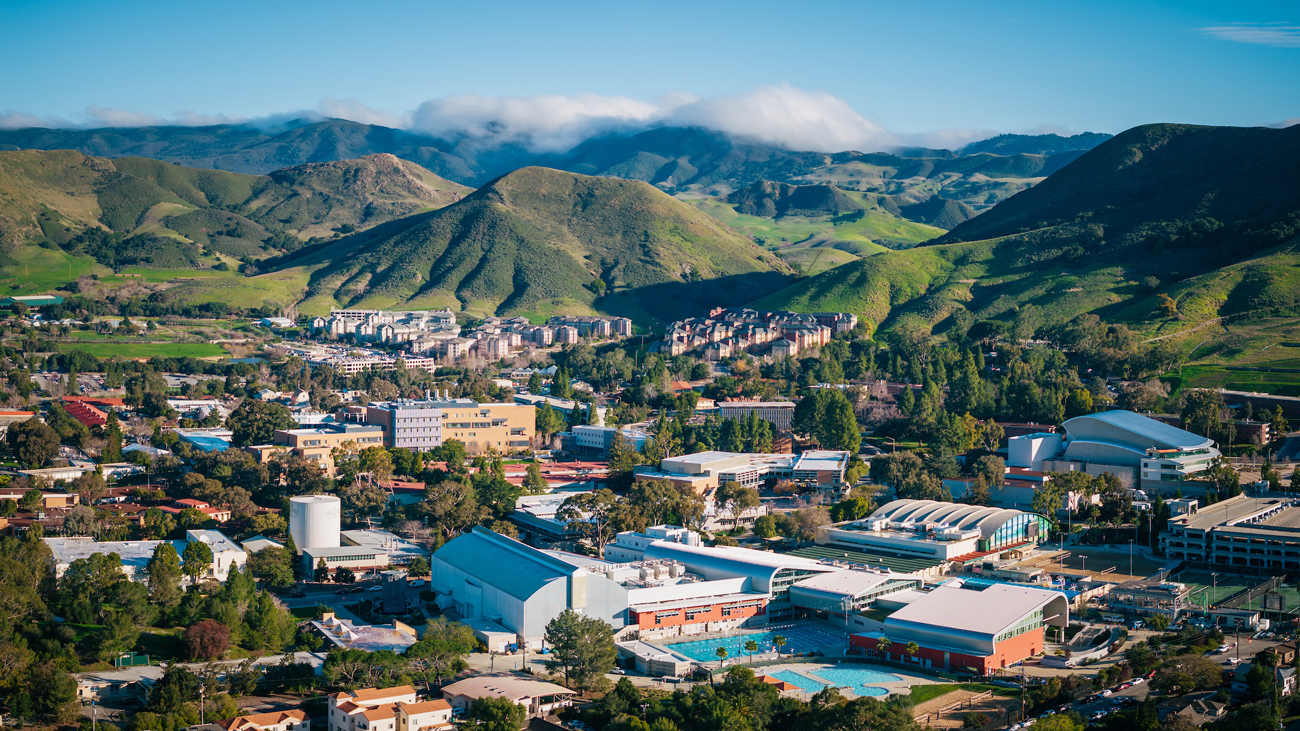
California Impact
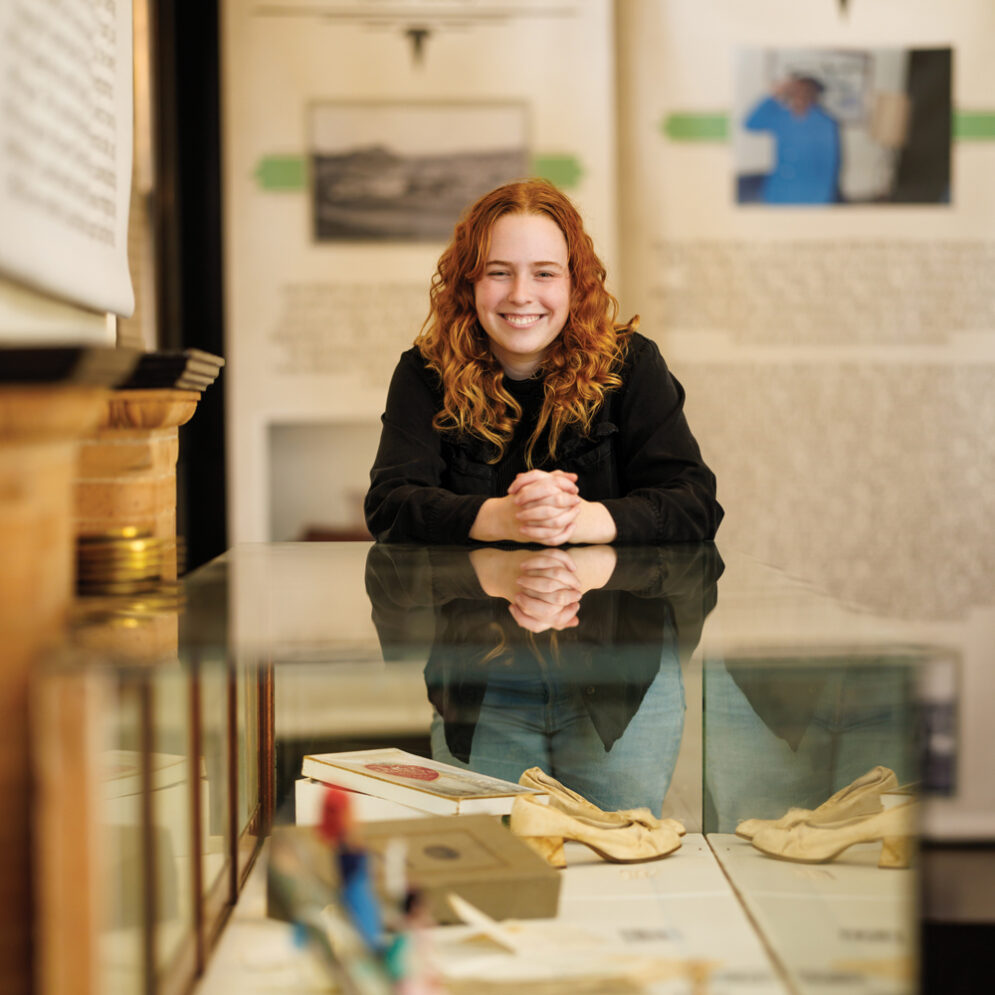
Hidden Voices
Anthropology and geography graduate Zoë Levit and fourth-year history major Jess O’Leary (pictured) co-curated “Hidden Voices,” now on display at the History Center of San Luis Obispo County. The exhibit explores the lives of four women who were central to local history.
“It’s called Hidden Voices because these women were lost to history. Their stories — their contributions to San Luis Obispo — were forgotten,” Levit said. “I hope that the stories that we tell go back home with the audience and that the lives and legacies of these women are preserved, that they aren’t forgotten.”
Campus News
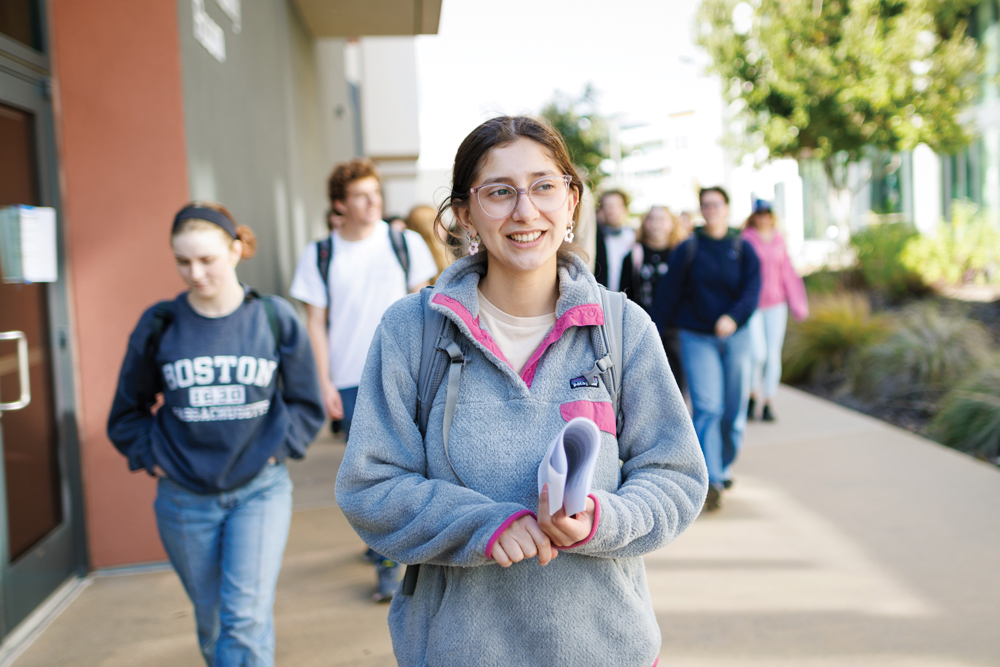
Ethnic studies student Amy Contreras leads a recent tour past the Native American and Indigenous Cultural Center.
Exploring Native History
Like much of California, Cal Poly lies on land originally held by Indigenous people — in this case, the yak titʸu titʸu yak tiłhini (ytt) Northern Chumash tribe. That connection — along with other campus ties to Native culture and history — is being explored in a new interactive campus tour developed by students.
The tour, which was developed by students participating in both BEACoN Research Scholars and Summer Undergraduate Research Project programs, is designed to shed light on aspects of Native American history that intersect with locations, names and objects around campus.
Visitors can experience the tour in one of three ways: a guided in-person tour with a member of the research team, a self-guided tour with a printed booklet, or a digitally-guided tour using the team’s ArcGIS story map.
Ethnic studies student Amy Contreras and computer science and ethnic studies student Sophie Martyrossian initially began working on the tour in early 2023 along with ethnic studies professors Becca Lucas and Lydia Heberling, who brought the idea from the University of Washington, where a Native undergraduate student had developed a similar Indigenous walking tour.
As they developed the tour materials, the students conducted interviews with ytt tribal members, did their own archival research and learned human research standards critical to avoiding past mistakes in anthropological research. They also collaborated with members of the ytt tribe to ensure a respectful and accurate tour experience.
“One of the important goals in the research and development part of this project was to think through the stakes of how we approach conversations with tribal members, given the not-always-great history between researchers and Indigenous communities,” said Heberling. “We wanted the students to learn how to approach that aspect of this project in a relational way, in a respectful way, and in a way that centers the interests of the tribe, so that we’re not just taking their information without doing something with it that does some good for them.”
— Larry Peña
Seen and Heard
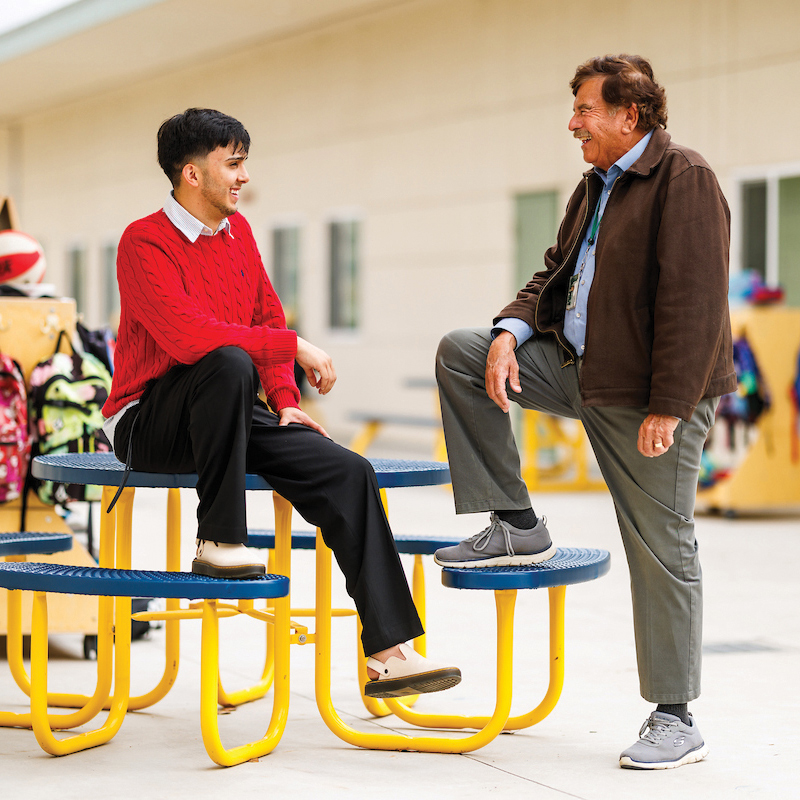
He tells me that teaching is a learning process. Some lessons go great, others not so great. The important part is to always reflect on each lesson and decide what works and what needs changes.
— Ramon Gutierrez (left), School of Education graduate student, about his supervisor, mentor and former elementary school principal, Juan Olivarria (right)
By the Numbers
Research
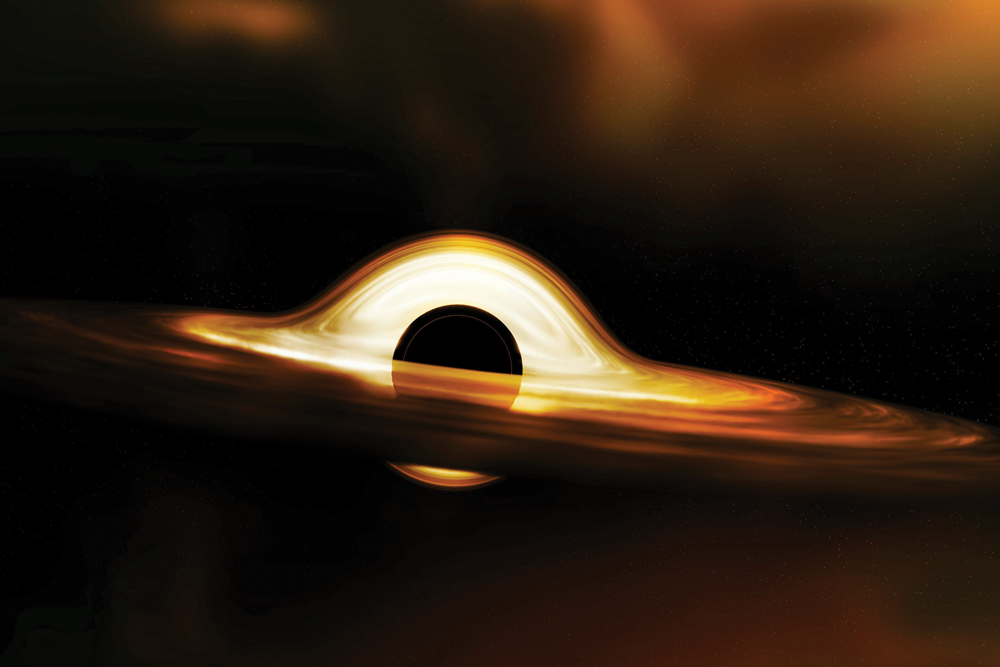 Supermassive Black Holes
Supermassive Black Holes
A Cal Poly research team led by physics professor Jodi Christiansen will study extremely high-energy photons emitted by the intense environment found near mega-sized black holes, thanks to the Astronomy Faculty Research Fellowship in the Bailey College of Science and Mathematics.
Christiansen, the 2024 faculty fellow, is working with VERITAS, a ground-based gamma ray instrument supported by Harvard and the Smithsonian, to study very-high-energy photons, or gamma rays, emitted by particles shooting down an astrophysical jet associated with supermassive black holes.
“These gamma rays are extremely energetic, so much so that they can’t come from a hot star, which just isn’t energetic enough,” Christiansen said. “What we’re looking at comes from the environment near a supermassive black hole.”
The plasma particles that the Cal Poly team observes come from an environment that is so powerful that the “atoms have fallen apart,” Christiansen said.
“Our images have shown jets that are bigger than galaxies,” she said. “This jet structure is huge compared to the galaxy. There aren’t a lot of places in space that produce this level of energy.”
Christiansen said that the high-energy gamma rays that reach Earth offer insights into the density and magnetic properties of the plasma very close to the supermassive black hole.
In recent years, Christiansen’s Cal Poly research teams have been active in discovering blazars, which are streams of high-energy electromagnetic radiation that are directed at an angle that points toward Earth.
The Astronomy Faculty Research Fellowship was launched in 2023 through a generous donation from the Marrujo Foundation (established by Cal Poly alumnus Daniel Marrujo and his wife, Rosamaria), covering three years of the program.
— Nick Wilson
Ask an Expert
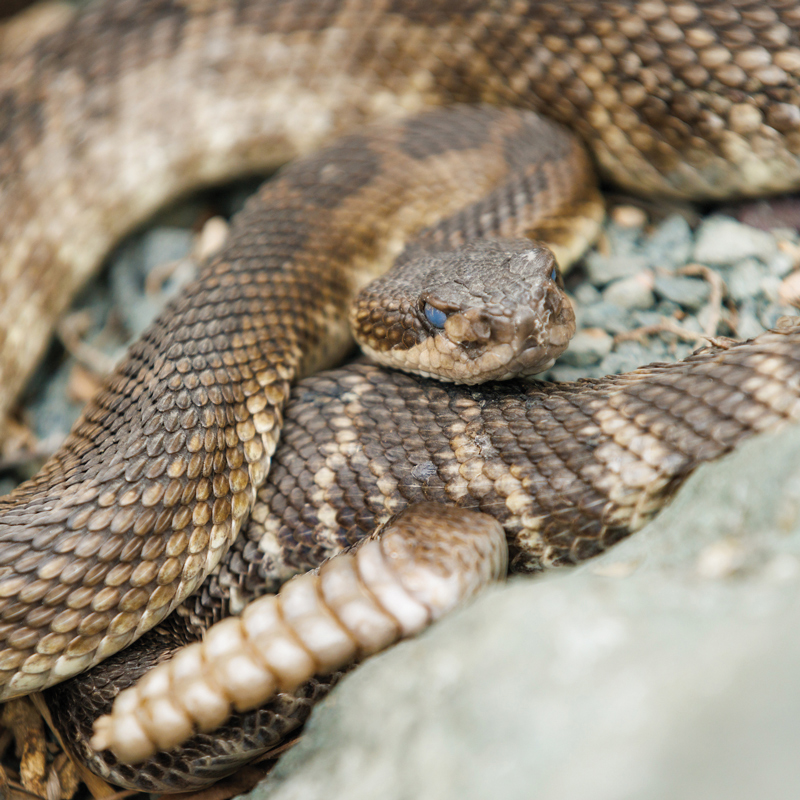
Sssstaying Ssssafe
As the weather warms, rattlesnakes are out and about. What should you do to stay safe? Biological sciences professor Emily Taylor, who owns a snake consulting business and runs the Physiological Ecology of Reptiles Lab at Cal Poly, gives five tips for a safe encounter.
- Wear good shoes that cover your ankles when hiking.
- Be aware of your surroundings, and give rattlesnakes lots of space.
- Don’t put hands and feet where you can’t see them.
- Eliminate any hiding places in your yard.
- If you get bitten, don’t try to suck or cut out the poison. Call 911 and get to a hospital ASAP.
Traditions
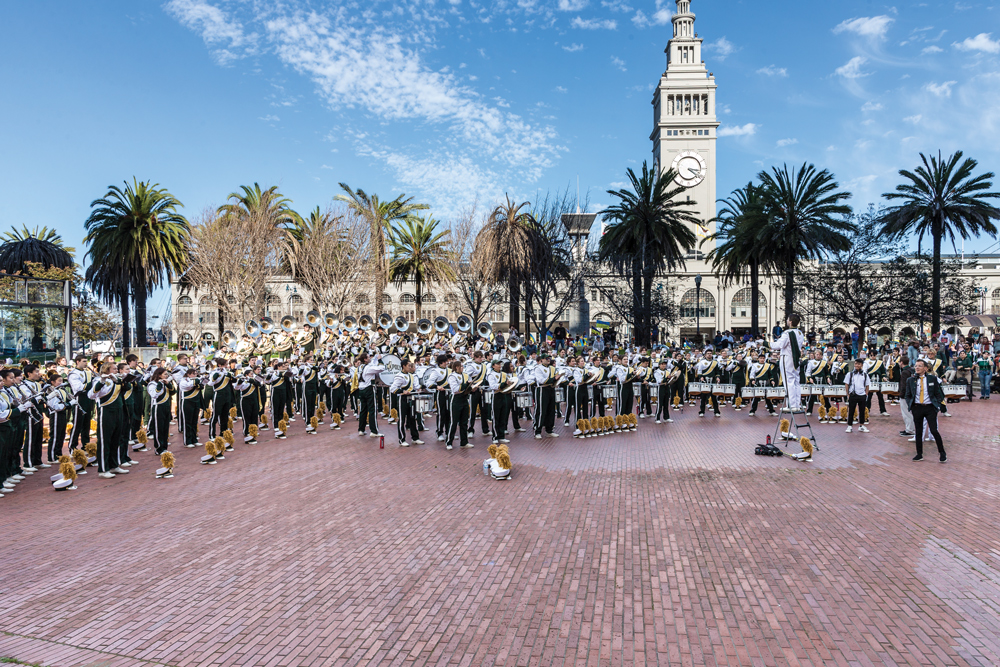
Photo: Mike Bottini
Make Some Noise
When the Mustang Band took to the streets of San Francisco for the 2024 Chinese New Year Parade on Feb. 24, it was a culmination of hard work and a celebration of togetherness.
For their final Chinese New Year Parade, fourth-year clarinet player and section leader Sierra Jordan and the other senior clarinet players made goody bags for the rest of their section to keep them occupied — and help them feel the love — on the way up to San Francisco.
“That bus trip is early and people might not have eaten breakfast yet, so we put in some snacks and a bingo card of things to spot on the drive, and made slime that they could fidget with,” she said. “It was really a ‘This is from the seniors, we hope you have a good day’ kind of thing.”
— Gabby Ferreira
Campus and Community
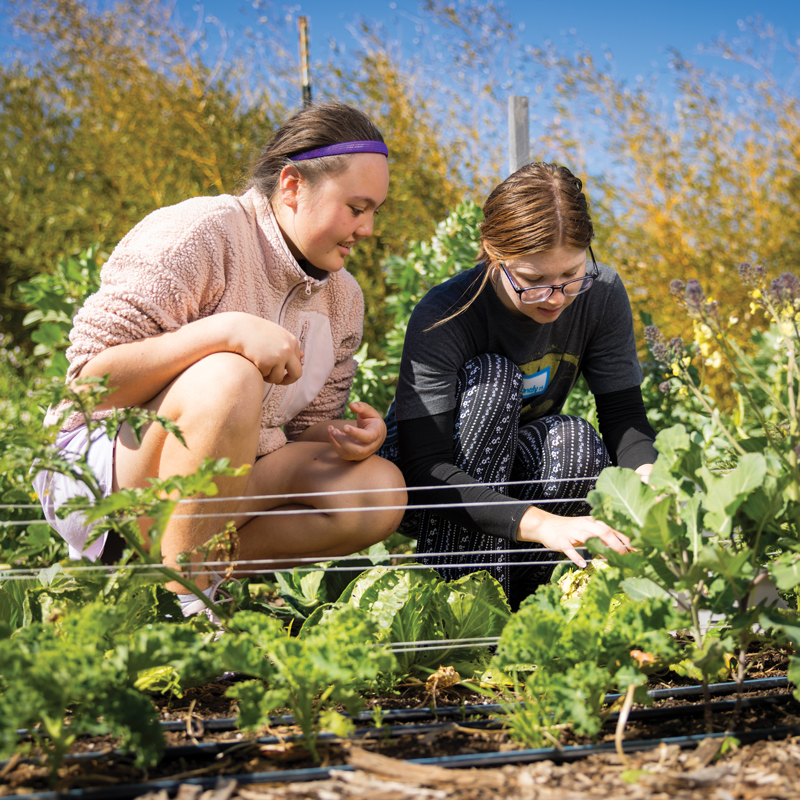
A Garden for All
Since September 2022, students in the #CaliforniansForAll College Corps program have volunteered thousands of hours supporting local schools, nonprofit organizations and the City of San Luis Obispo through a variety of service projects. In this photo from April, College Corps students help facilitate a therapeutic horticulture class at partner organization City Farm SLO for local high school students with disabilities.



